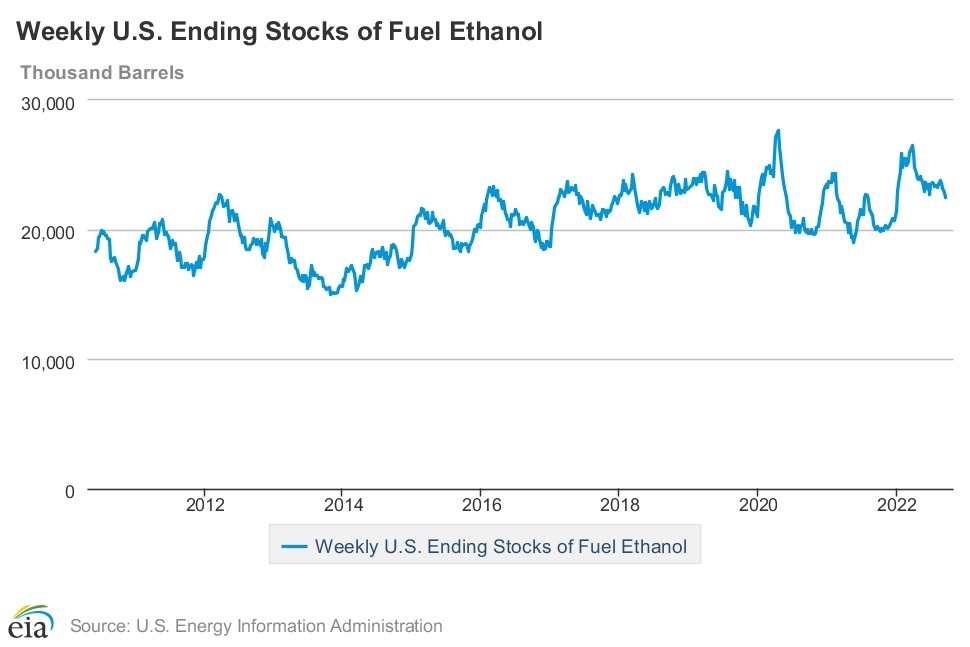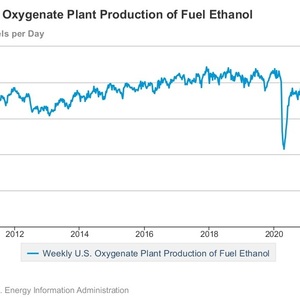EIA: Ethanol production down 6%, stocks down 2%



September 21, 2022
BY Erin Krueger
U.S. fuel ethanol production declined by more than 6 percent the week ending Sept. 16, falling to the lowest level since February 2021, according to data released by the U.S. Energy Information Administration on Aug. 21. Ethanol stocks fell by nearly 2 percent.
Fuel ethanol production averaged 901,000 barrels per day the week ending Sept. 16, down 62,000 barrels per day when compared to the 963,000 barrels per day of production reported for the previous week. When compared to the same week of last year, production for the week ending Sept. 16 was down 25,000 barrels per day.
Weekly ending stocks of fuel ethanol fell to 22.501 million barrels the week ending Sept. 16, down 342,000 barrels when compared to the 22.843 million barrels of stocks reported for the previous week. When compared to the same week of last year, stocks for the week ending Sept. 16 were up 2.39 million barrels.
Advertisement
Advertisement
Advertisement
Advertisement
Related Stories
CoBank’s latest quarterly research report, released July 10, highlights current uncertainty around the implementation of three biofuel policies, RFS RVOs, small refinery exemptions (SREs) and the 45Z clean fuels production tax credit.
The U.S. Energy Information Administration maintained its forecast for 2025 and 2026 biodiesel, renewable diesel and sustainable aviation fuel (SAF) production in its latest Short-Term Energy Outlook, released July 8.
XCF Global Inc. on July 10 shared its strategic plan to invest close to $1 billion in developing a network of SAF production facilities, expanding its U.S. footprint, and advancing its international growth strategy.
U.S. fuel ethanol capacity fell slightly in April, while biodiesel and renewable diesel capacity held steady, according to data released by the U.S. EIA on June 30. Feedstock consumption was down when compared to the previous month.
XCF Global Inc. on July 8 provided a production update on its flagship New Rise Reno facility, underscoring that the plant has successfully produced SAF, renewable diesel, and renewable naphtha during its initial ramp-up.
Upcoming Events










